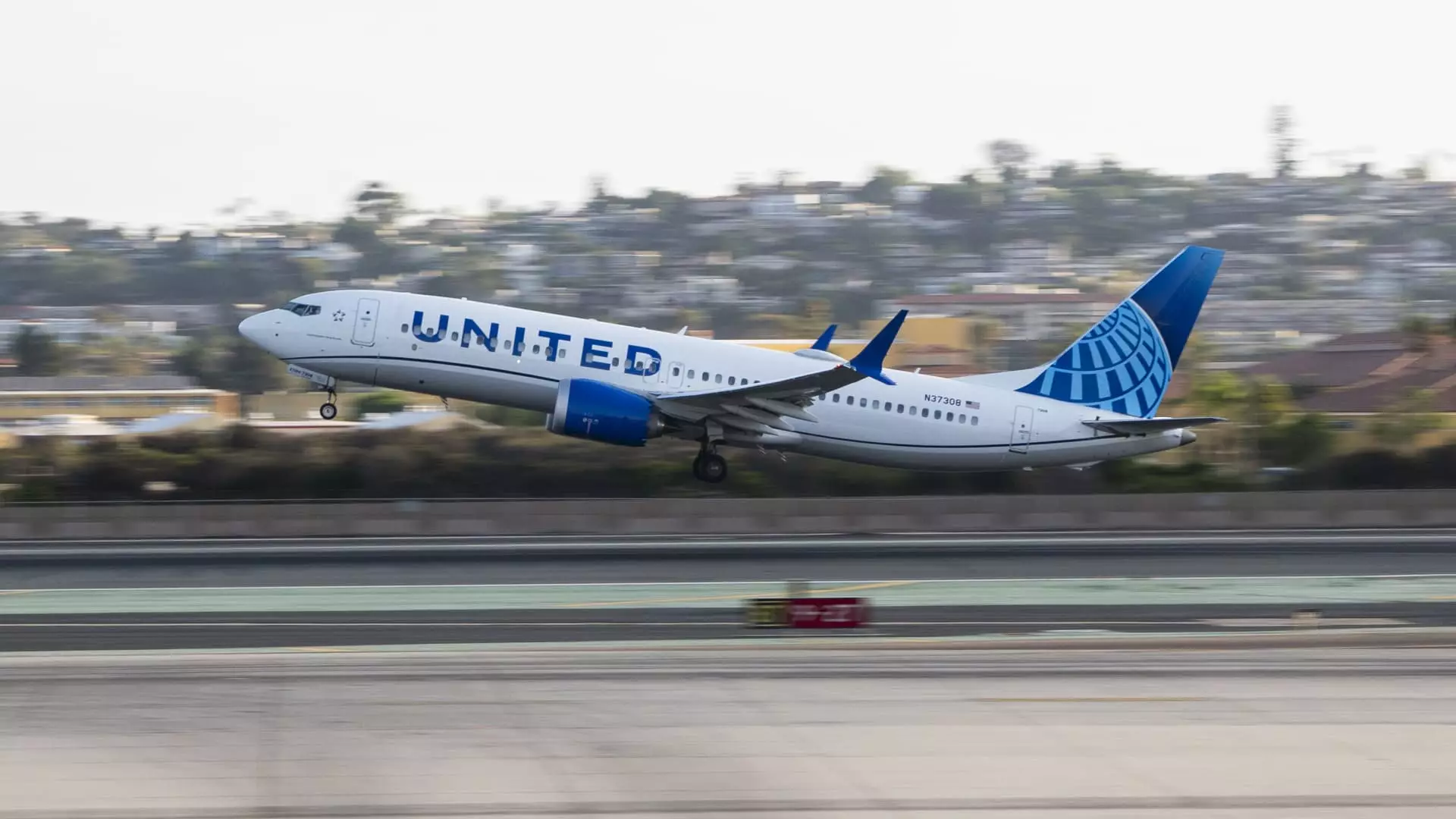In a significant move signaling confidence in its financial stability, United Airlines announced on Tuesday that it is set to initiate a $1.5 billion share buyback program. This announcement coincided with the release of the airline’s higher-than-anticipated earnings for the third quarter of the year, particularly benefiting from the busy summer travel period. The airline’s projected fourth-quarter earnings, with a forecast of an adjusted $2.50 to $3.00 per share, demonstrate not only recovery from the pandemic-induced downturn but also an optimistic outlook going into the final months of the year. This contrasts markedly with last year’s fourth-quarter figures of $2.00 per share, showcasing a marked improvement in business operations.
United’s financial results for the third quarter illustrated a robust performance, with adjusted earnings per share reported at $3.33, surpassing Wall Street’s projection of $3.17. Revenue figures similarly exceeded expectations; United recorded $14.84 billion, a marginal 2.5% increase from the same period last year, and higher than the anticipated $14.78 billion. These figures suggest a well-managed approach to pricing and capacity, especially as the airline industry navigated through a complicated post-pandemic environment.
The introduction of the share buyback program marks a pivotal moment for United, as it is the first of its kind since the financial strain caused by COVID-19. During the pandemic, U.S. airlines collectively received over $50 billion in governmental support, which included prohibitive conditions on share buybacks and dividends. United finding itself in a position to reinstate this financial strategy is indicative of a recovering sector that is looking to rebuild shareholder trust.
Moreover, United’s strategic maneuvers in the third quarter have paid off well, as reflected in their revenue composition. Corporate revenue surged by 13%, while premium services, particularly business class offerings, witnessed a 5% upswing. The airline’s no-frills basic economy tickets also saw a substantial 20% growth, indicating a diversified market strategy that caters to various consumer segments, particularly as travel demand rebounds.
Additionally, United has made bold steps for the future, announcing plans for an ambitious expansion that includes new international routes to destinations like Mongolia, Senegal, and Greenland. This expansion is a strategic response to the burgeoning international travel market, signifying their commitment to capturing new business opportunities.
Despite the positive financial indicators, United Airlines is not without its challenges. The recent announcement of the share buyback has drawn criticism from the flight attendants’ union, which argues that the focus on shareholder returns may detract from addressing ongoing labor negotiations and employee welfare. This sentiment highlights the potential tension within the company as it balances investor interests with the needs of its workforce, especially as many employees continue to negotiate labor agreements post-pandemic.
Furthermore, analysts will be keen to examine United’s approach towards maintaining demand as the year closes and into 2025, especially in light of the current production challenges at major aircraft manufacturer Boeing. This situation signifies an industry-wide risk that could impact operational capacity and financial projections.
As United Airlines steps into this new phase of its post-pandemic recovery, initiating a share buyback program while aiming for aggressive growth, it must tread carefully. The financial figures presented during the last quarter certainly paint a picture of success, yet underlying issues, including labor negotiations and supply chain disruptions, necessitate thoughtful navigation. The coming months will be crucial as United attempts to strike a balance between rewarding investors and ensuring the needs of its employees are adequately met. Only time will tell if this delicate balancing act leads to sustained growth and overall organizational harmony.

